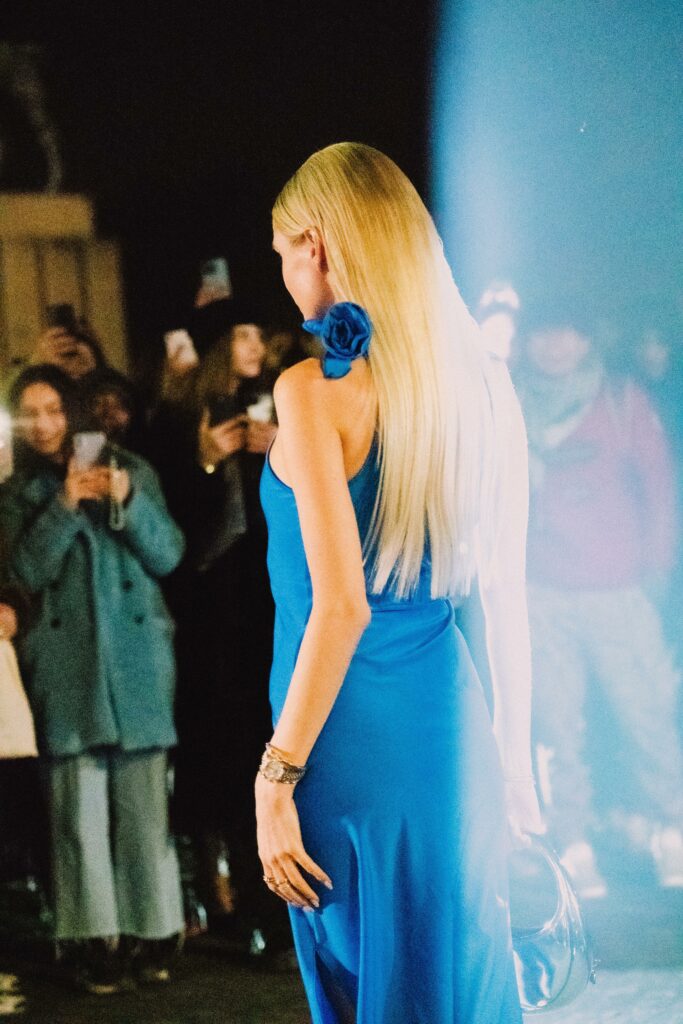
As the Paris Fashion Week dazzled audiences this Spring/Summer 2025, a thought-provoking question emerged: Is fashion’s future truly shaped by revisiting its past? This season’s collections seemed to suggest that the answer is more complex than a simple yes or no. Instead, designers skilfully balanced nostalgia with innovation, using the past as a springboard for bold, forward-thinking creations. By drawing from iconic trends of previous decades and blending them with contemporary designs, the runways revealed that revisiting fashion history might not just be inevitable, but essential in shaping its future. But does this reliance on the past limit creativity, or can it unlock new possibilities?
'20s Opulence Revived with a Contemporary Twist
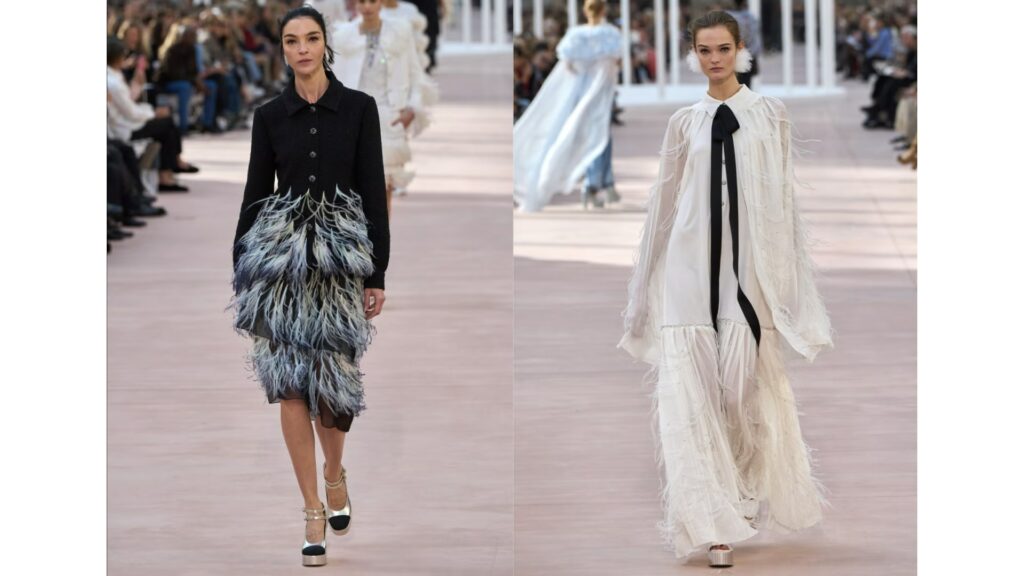
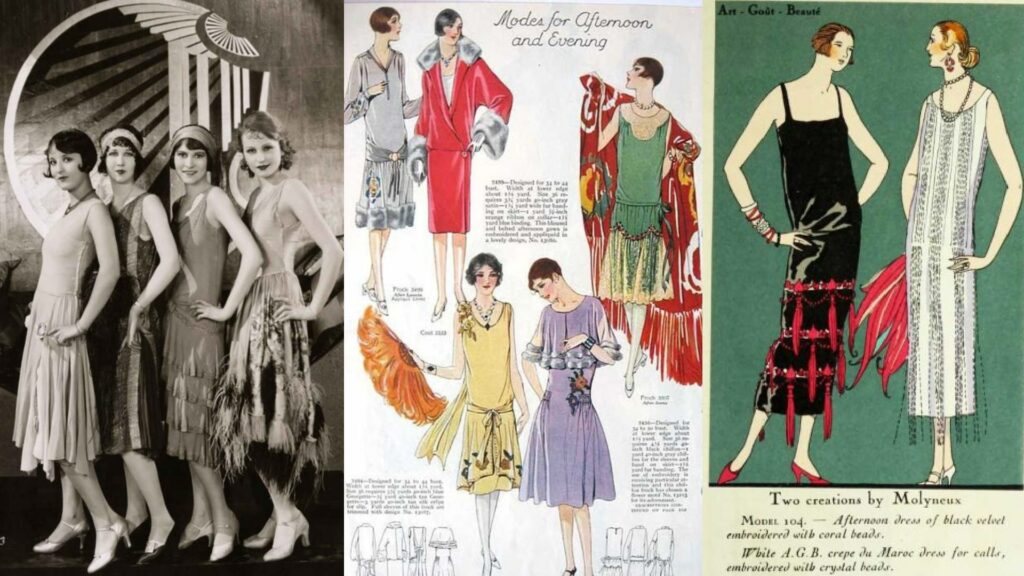
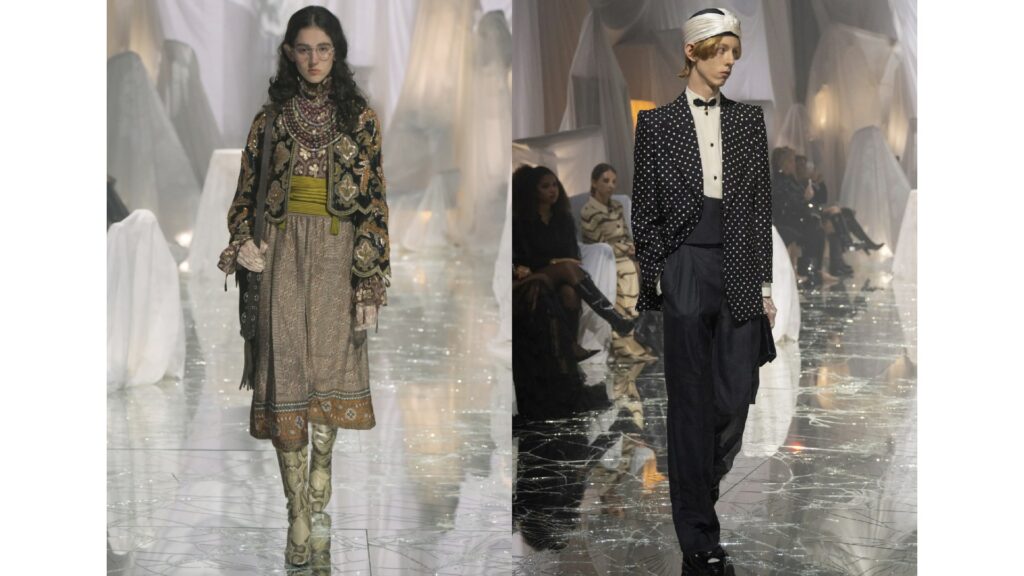
Chanel and Valentino brought back the glamour of the Roaring ’20s with modern-day extravagance. Beaded dresses, Art Deco embellishments, and flapper-inspired designs were reinterpreted with contemporary silhouettes and smooth tailoring. Chanel leaned into the Jazz Age with sophisticated fringe details, metallic sequins, signature pearls, and feathers, while Valentino added intricate embroidery and rich fabrics like velvet and silk. The ’20s revival this season felt luxurious but less theatrical, making it suitable for both red carpets and modern-day wardrobes. This moment is historic for both fashion “maisons,” as it marked Alessandro Michele’s first show as Creative Director for Valentino and Chanel’s first show after the departure of Creative Director Virginie Viard.
'30s Goddess Glamour turns to Surrealistic Chic
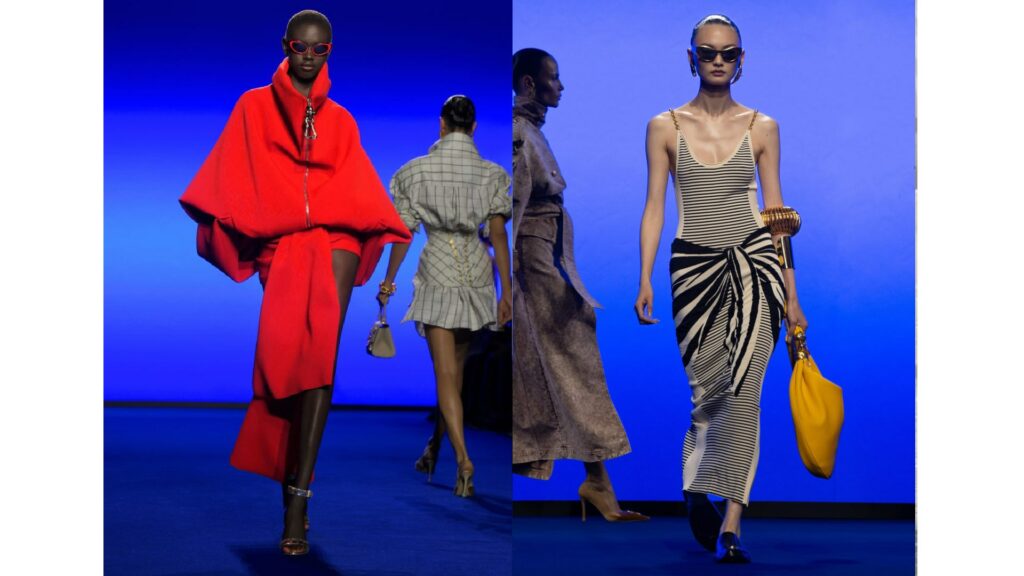
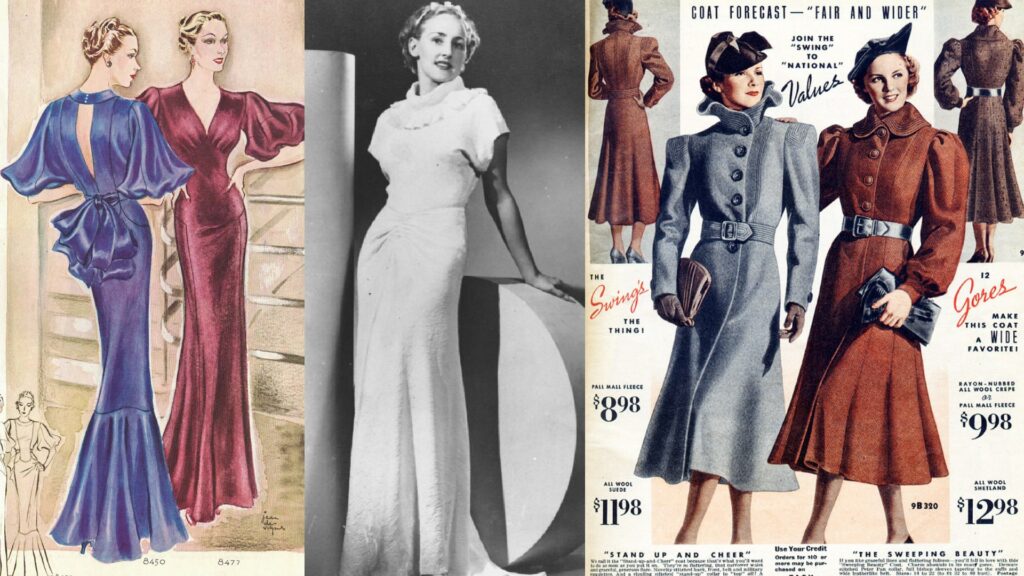
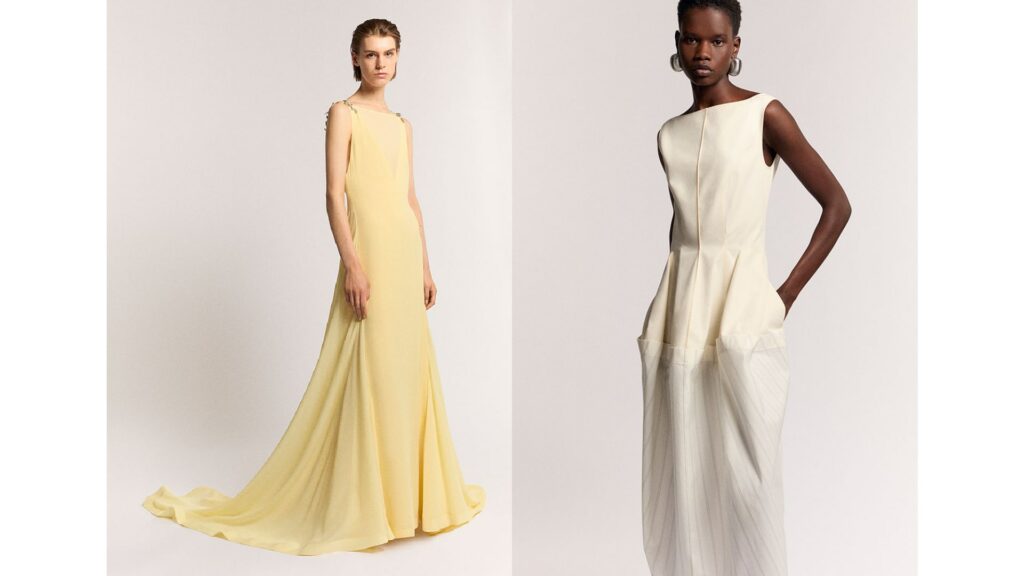
Lanvin and Schiaparelli took the goddess-like glamour of the 1930s and transformed it into sleek, sculptural masterpieces for 2025. Flowing, bias-cut gowns that once celebrated soft, ethereal femininity were reinterpreted with structured silhouettes and sharper lines. Draped fabrics gave way to bold geometric shapes and metallic details, adding a modern, architectural edge to the vintage charm. The balance between soft, romantic elements and contemporary precision showcased how the divine elegance of the ’30s could evolve into something both powerful and cutting-edge for the modern era.
'40s Militarycore to Utilitycore
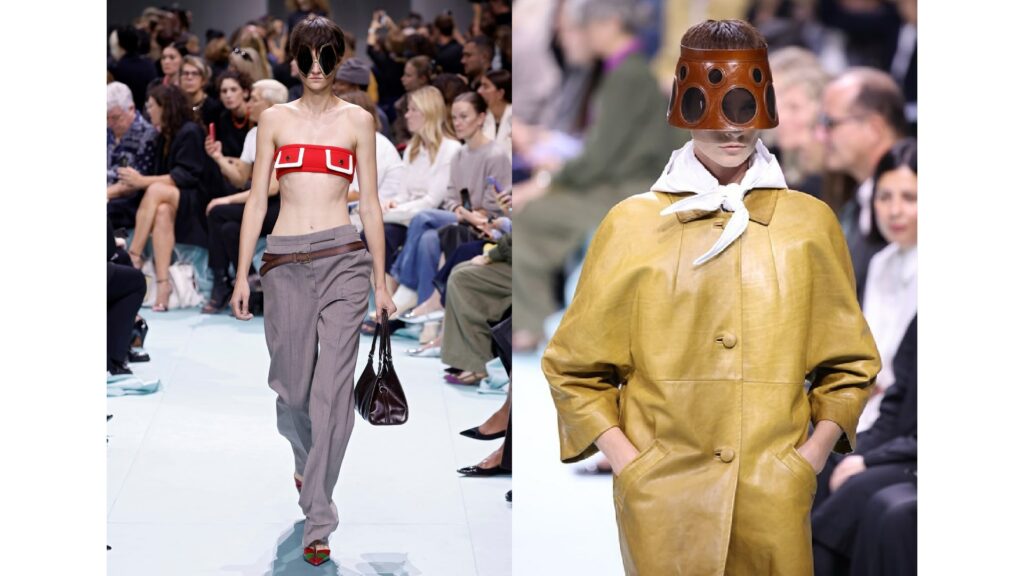
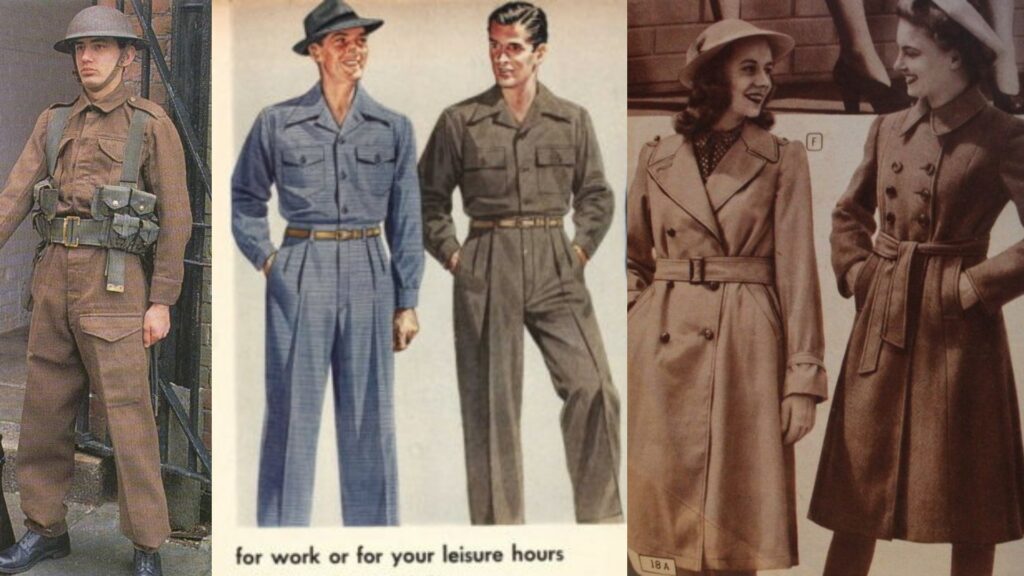
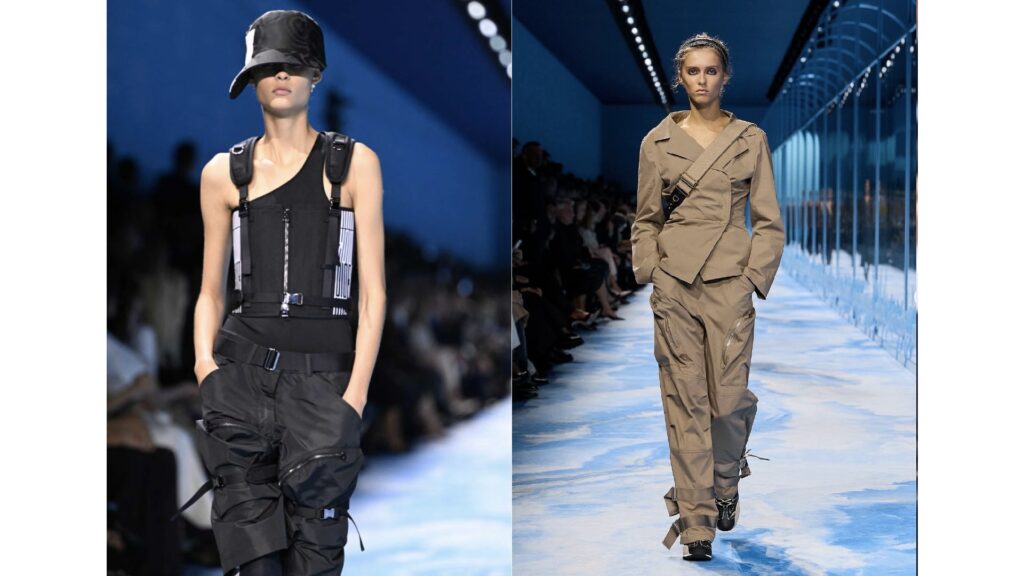
Prada and Dior have redefined ’40s uniform elegance for their Spring/Summer 2025 collections by blending classic tailored silhouettes with modern utilitycore elements. Prada’s structured blazers, high-waisted trousers, and oversized pockets pay homage to wartime fashion while prioritizing ease of movement. Dior, despite being criticized for its “mundane” designs this season, leaned into functional techwear-inspired fashion. Both collections balance vintage uniforms with contemporary design, evoking a modern dystopian “fight or flight” civilization, featuring oversized pockets and durable textiles that prove dapper style can embrace functionality without sacrificing aesthetics. While there’s no intention to glamorize war—especially given the current global circumstances—this fusion highlights how the elegance of the ’40s during difficult times continues to resonate in today’s fashion landscape.
'50s Space-Age to the New Retro Futurism
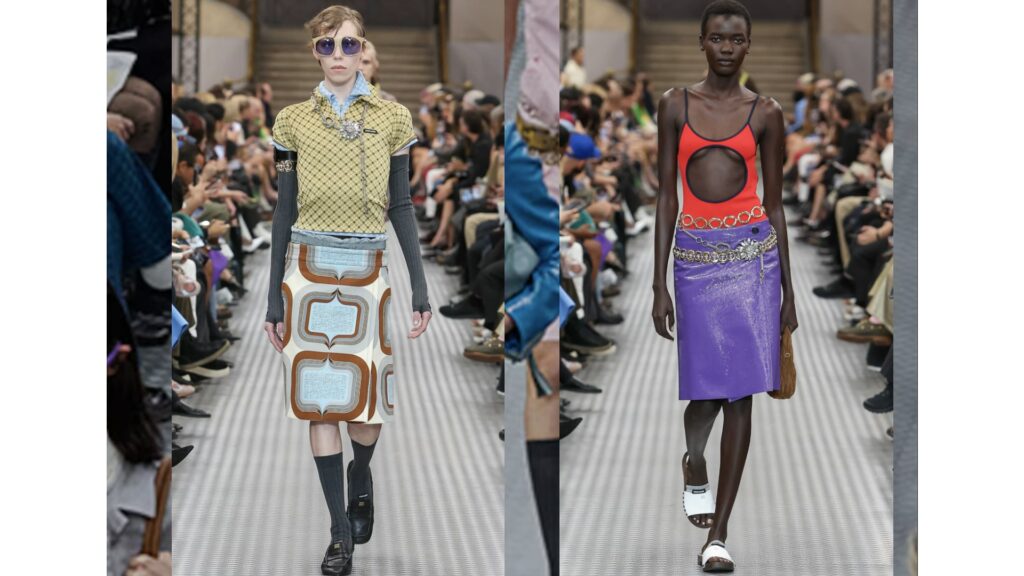
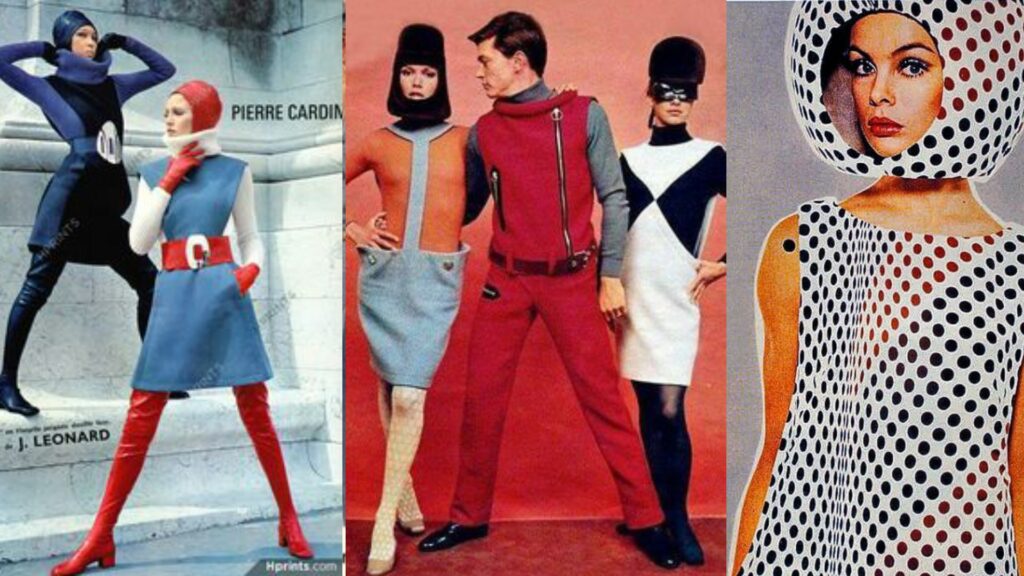
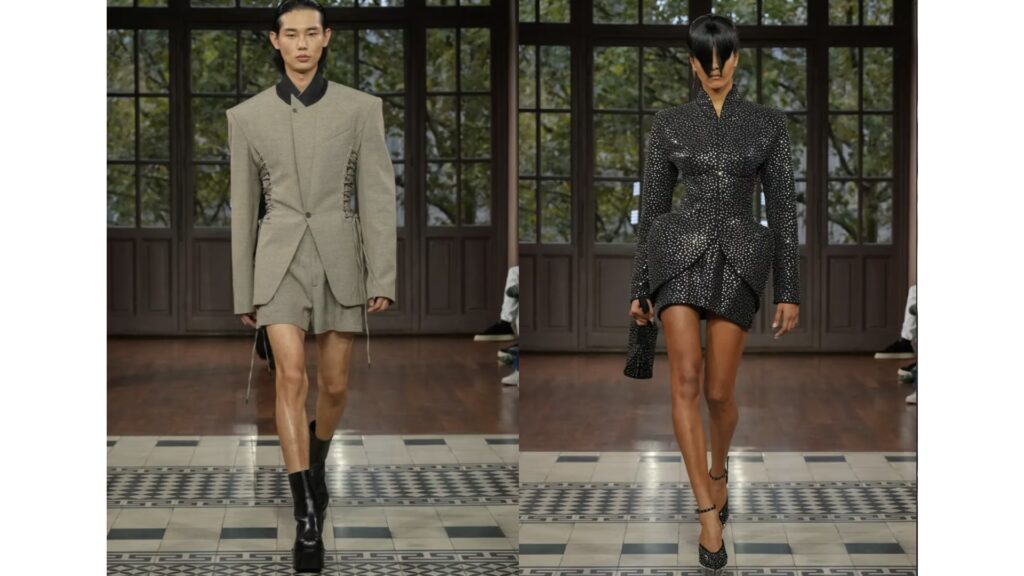
Mugler and Miu Miu embraced futuristic, space-age aesthetics with a new generation of Retro Futurism. Channeling the optimism of the 1960s’ fascination with space exploration, the collections featured metallic fabrics, sharp angular lines, and glossy geometrics—hallmarks of space-age fashion. However, the SS 2025 version felt more daring and spatial, with exaggerated silhouettes, cutouts, and sci-fi-inspired accessories giving a nod to retro-futurism culture of the ’50s. The result was a fusion of retro futurism and digital-age rebellion, capturing a mood that felt both nostalgic and revolutionary.
'60s Psychedelic Prints turn to Contemporary Art
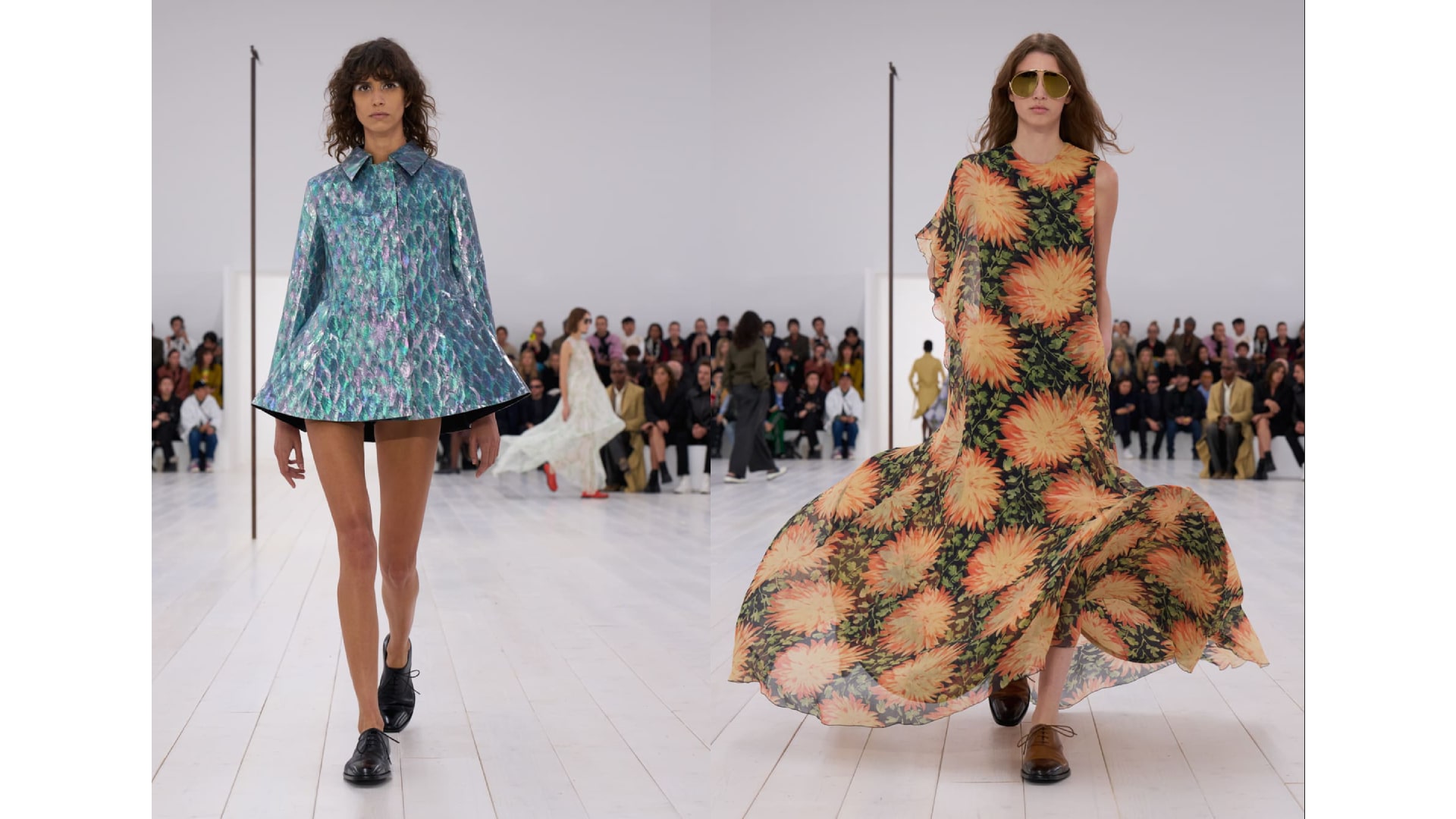
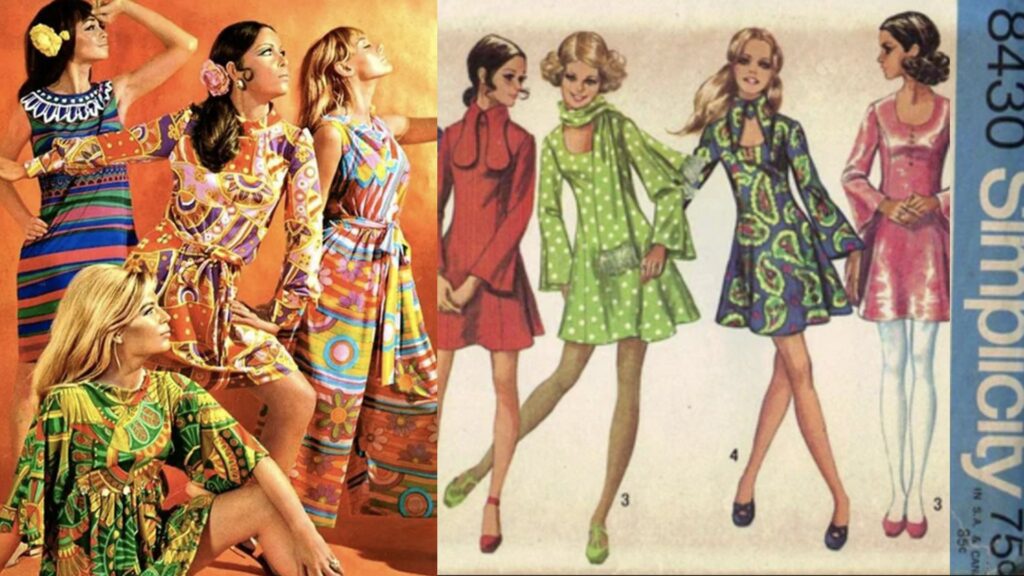
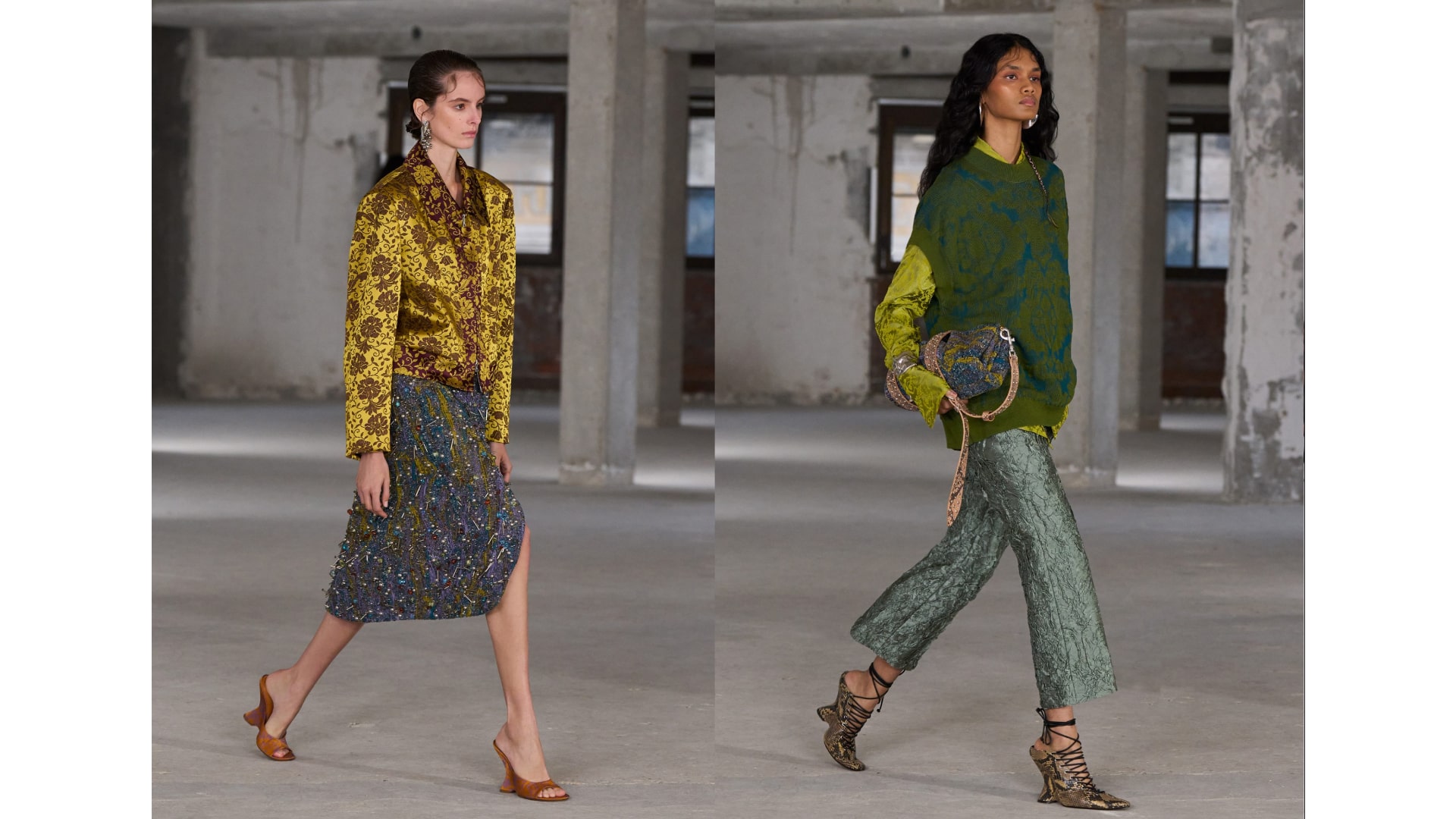
Loewe and Dries Van Noten took inspiration from the bold prints and vibrant colors of the late 1960s, bringing psychedelic patterns back to the forefront but with a refined, impressionistic artistic interpretation. Swirling geometric prints and kaleidoscopic colors were seen in both collections, reminiscent of the playful mod style of the ’60s. However, these prints were paired with refined, minimal silhouettes and high-end fabrics, allowing the patterns to take center stage without overwhelming the designs. The result was a playful yet sophisticated nod to the colorful, experimental spirit of the 1960s.
'70s Boho Dream transform to Modern Romanticism
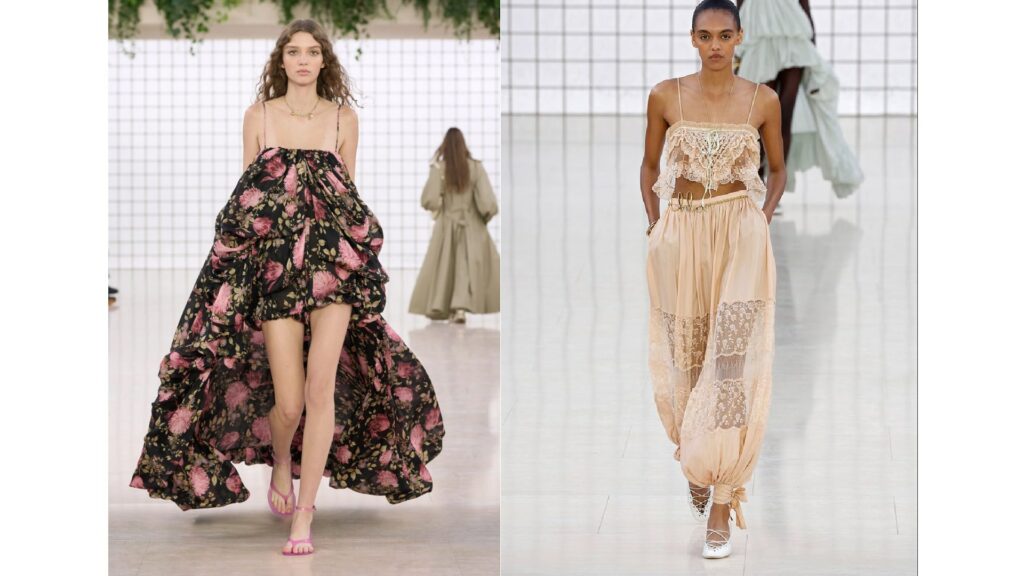
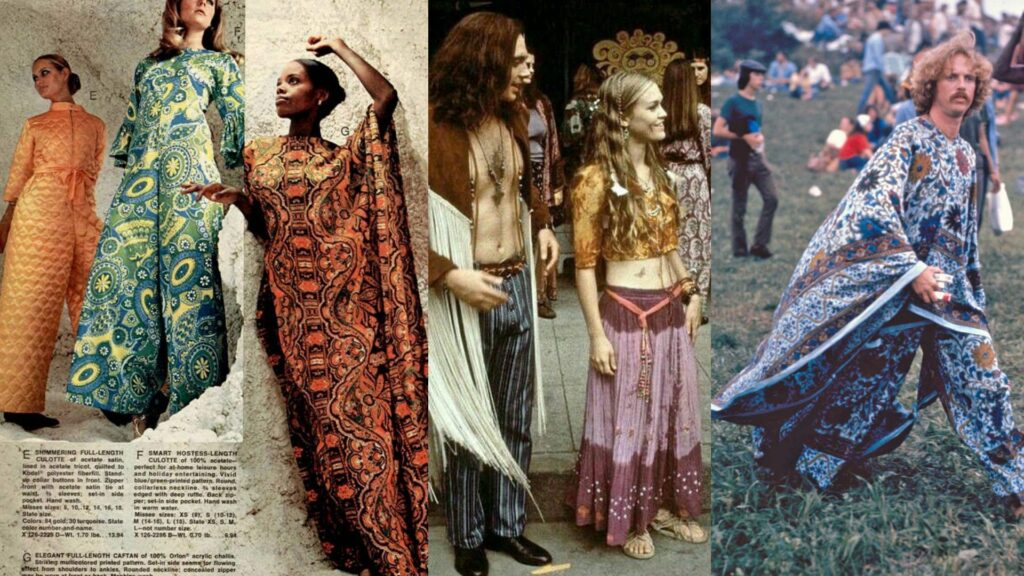
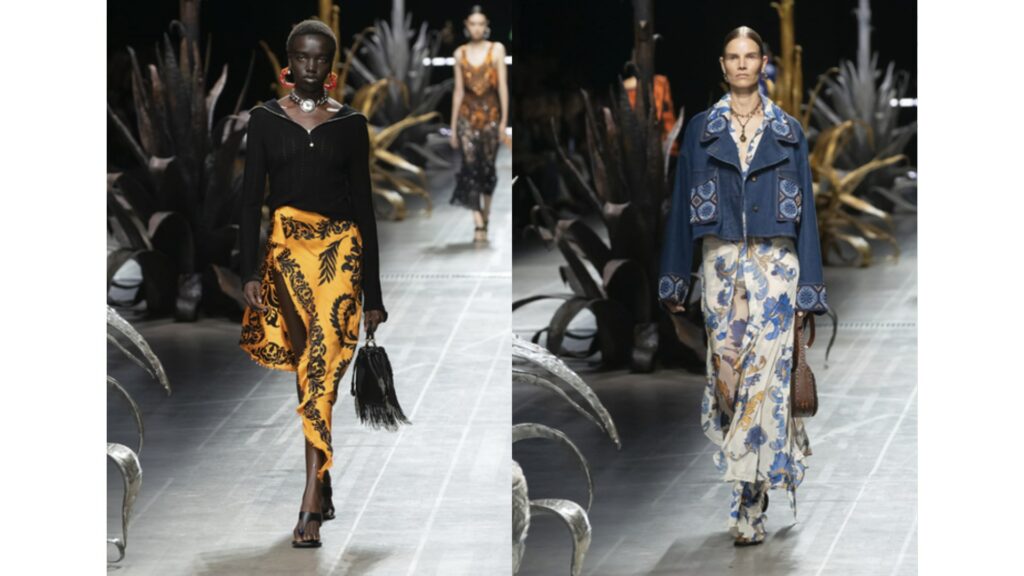
Chloé and Etro revived the effortless beauty of the 1970s with a modern romanticism. Flowing maxi dresses in neutral tones, crochet details, and ethereal sheer fabrics took center stage. This season’s bohemian flair felt more streamlined and polished, blending the free-spirited vibe of the ’70s with romantic, flowy cuts and sustainable fabrics. Both brands embraced eco-friendly designs, reflecting a conscious approach to luxury—a nod to the current generation’s love for mindfulness and slow fashion.
'80s Power Dressing went Ultra-Sleek
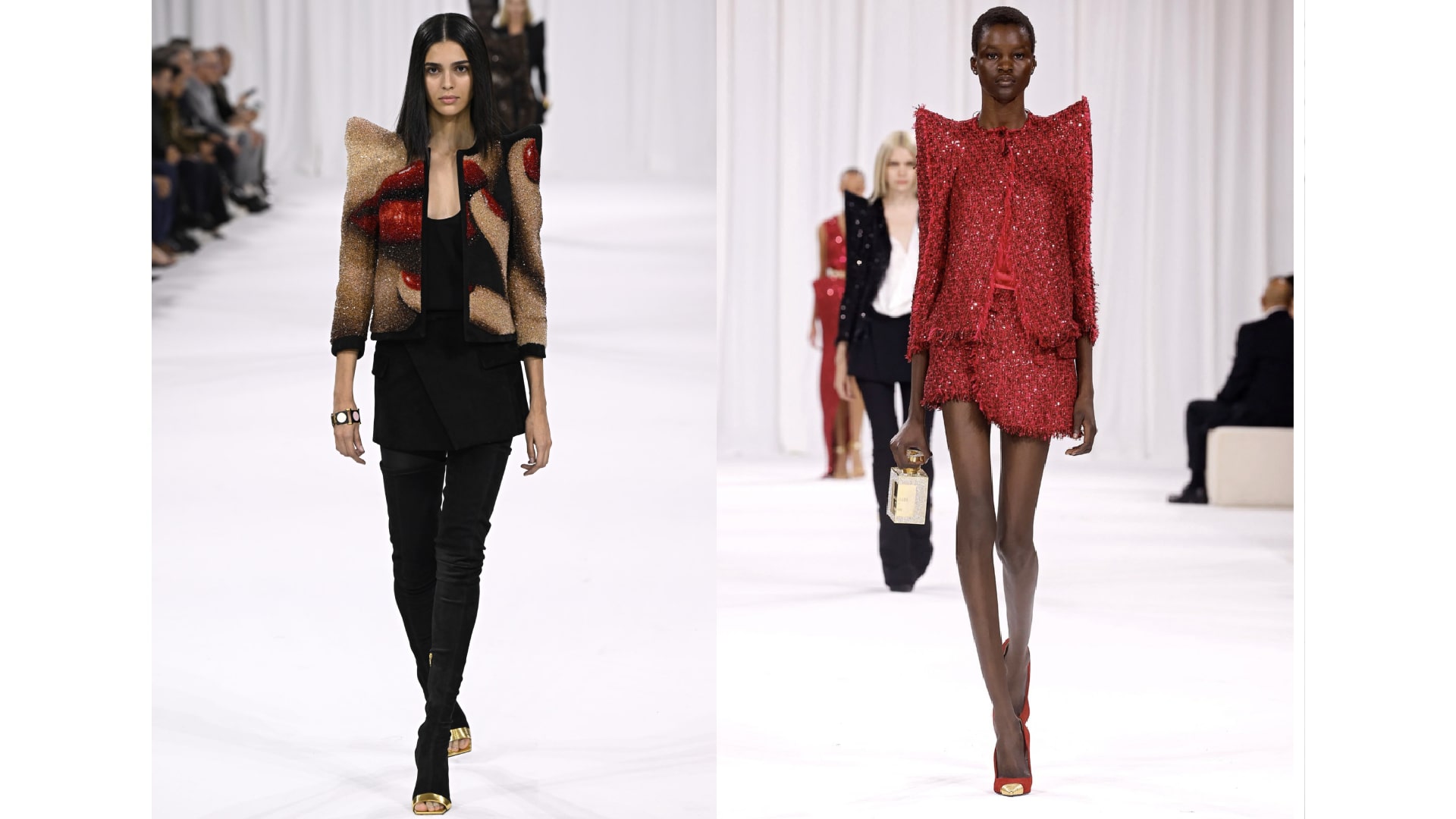
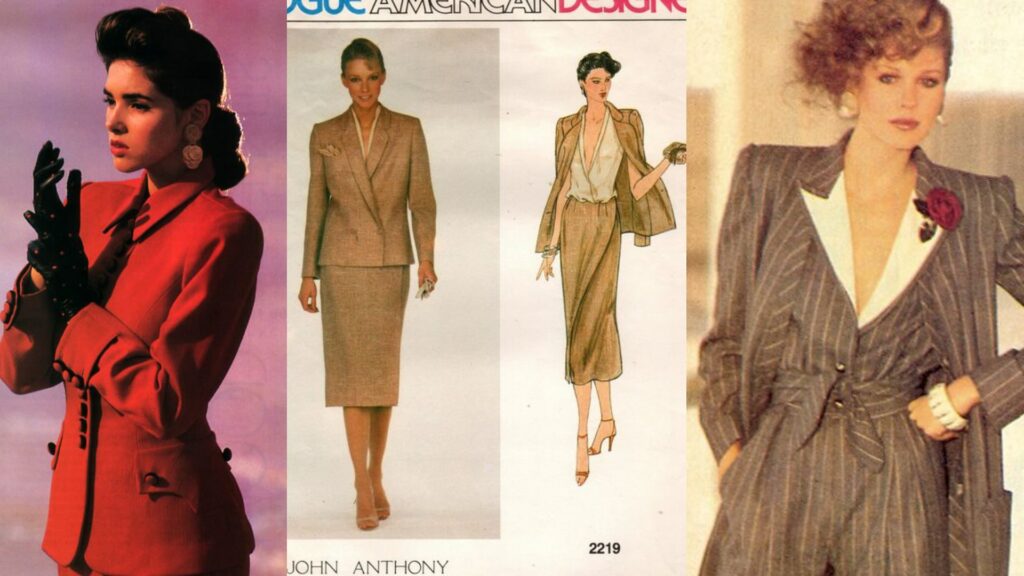
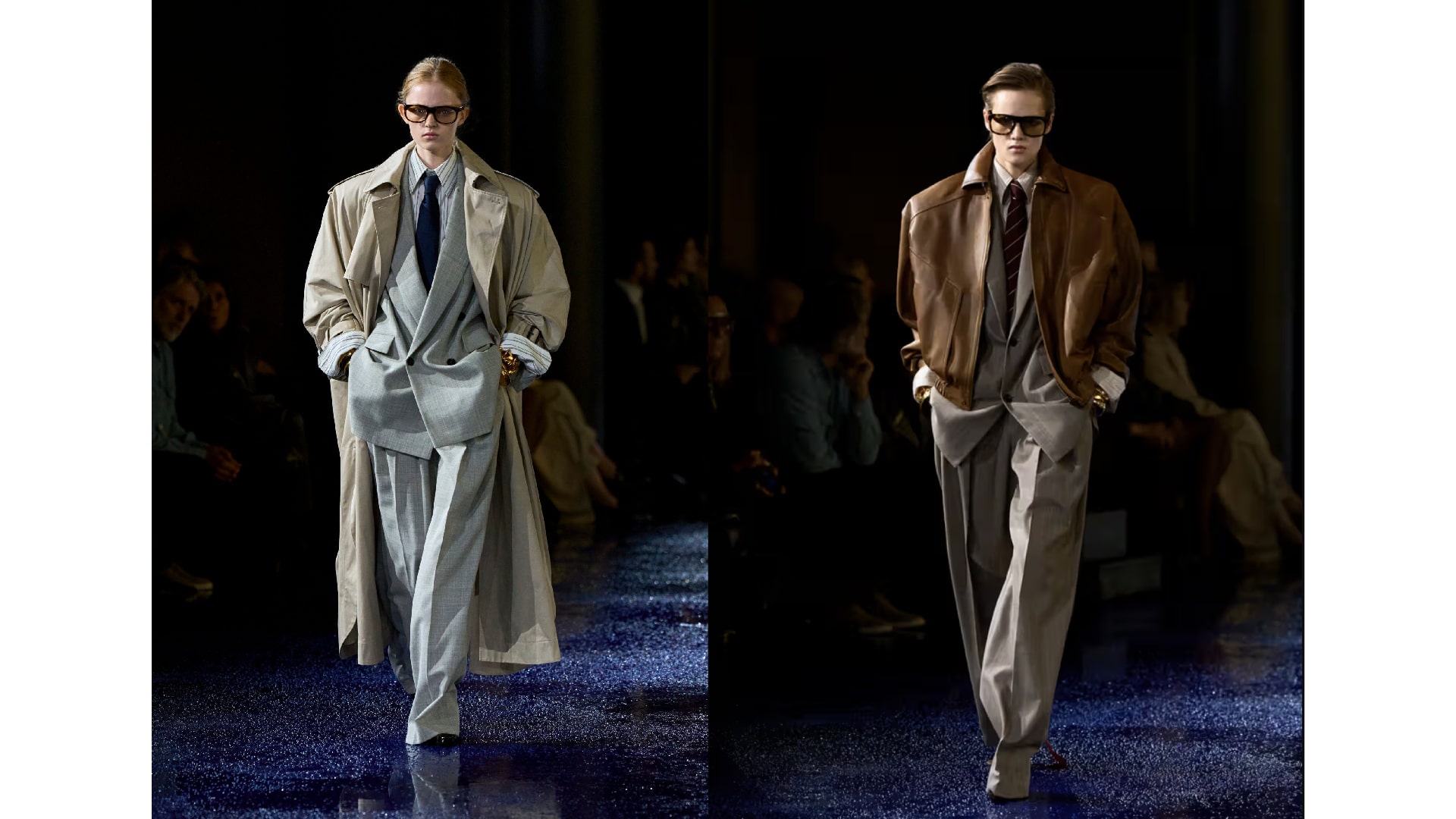
Balmain and Saint Laurent, true to their signature architectural shoulders and power dressing, presented this season with exaggerated silhouettes reminiscent of the 1980s but delivered with an ultra-sleek twist. The sculpted and structured tailoring remained, but this time they were paired with glossy fabrics, duochromatic palettes, and metallic sequin details. The power suit was redefined—sharper and more elegant—signaling that ’80s power dressing is here to stay, but in a refined, exciting form for 2025. For Saint Laurent High-waisted trousers and form-fitting blazers took the spotlight with oversize allure, creating a balance between vintage power and contemporary cool.
'90s Minimalism meets Avant-Garde
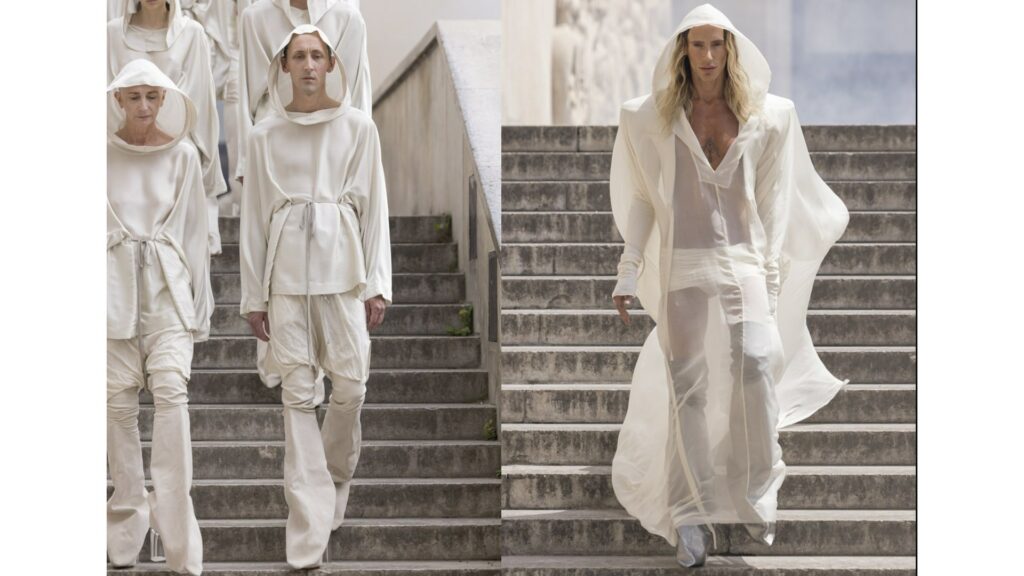
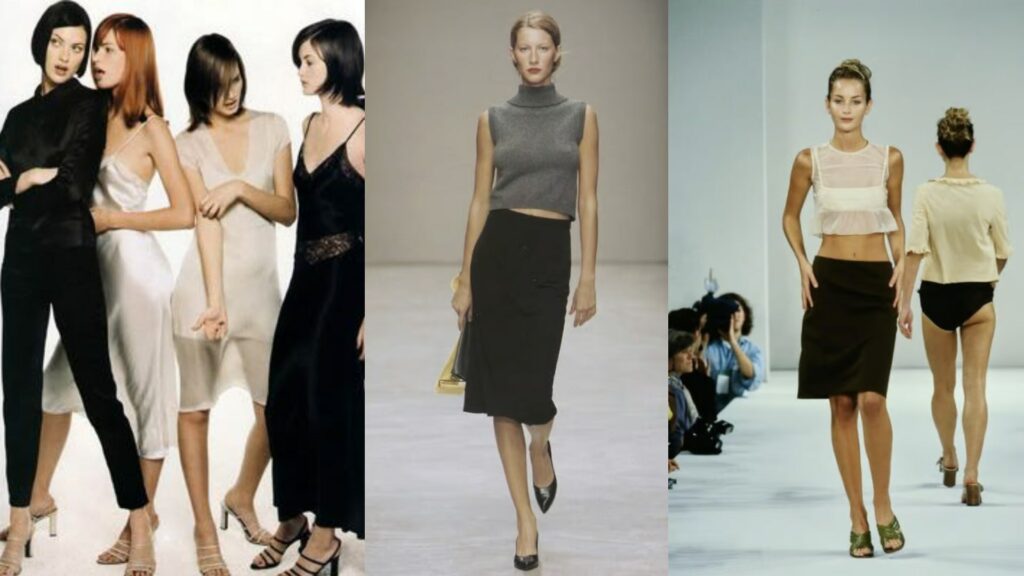
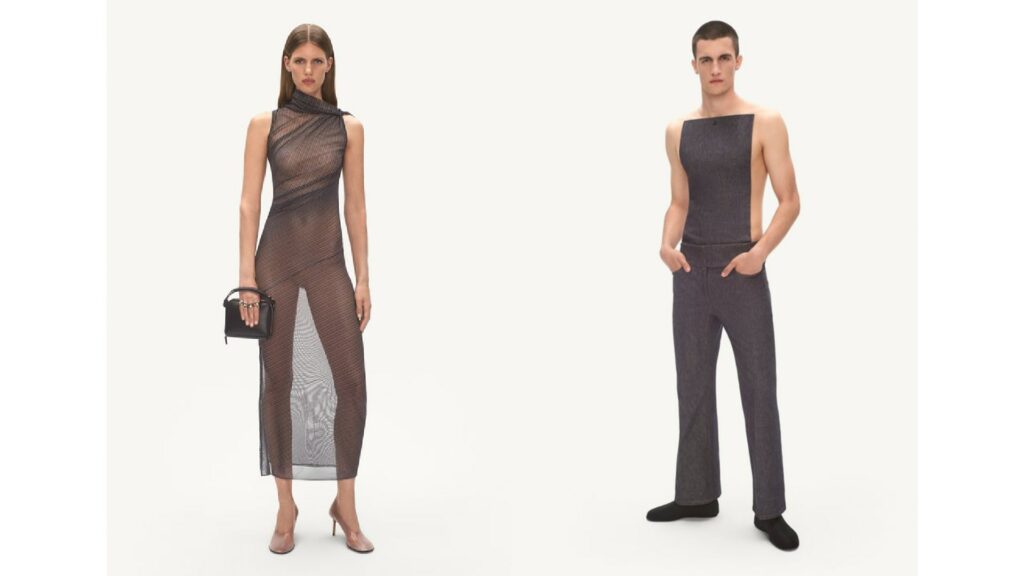
Rick Owen’s and Courrèges took the minimalist aesthetic of the ’90s but with an avant-garde update for the SS 2025 collections. Clean lines, oversized blazers, and monochromatic ensembles dominated the runway, but the tailoring was sharper, and the materials were more luxurious. Both brands embraced the simplicity of the ’90s but added modern touches such as asymmetrical cuts, deconstructed layers, and textured fabrics. This season’s take on minimalism was understated yet daring, offering a wearable yet artistic approach to ’90s revival.
Y2K Nostalgia is now Kidcore
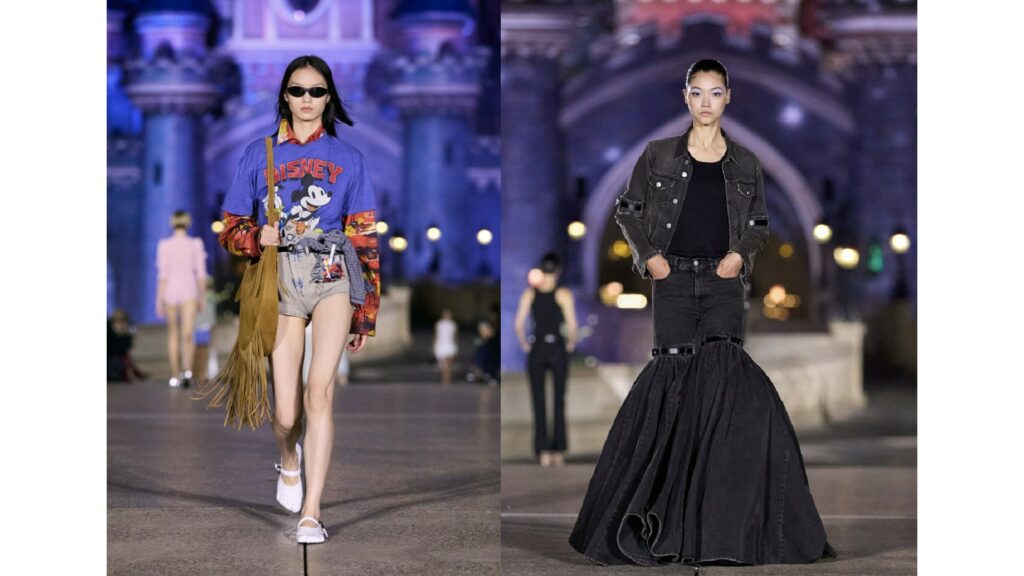
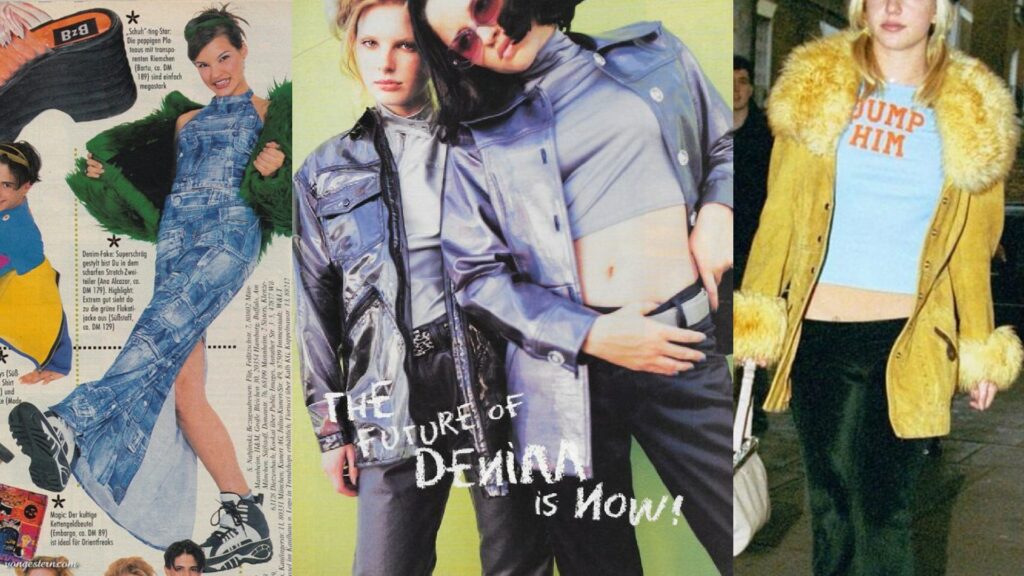
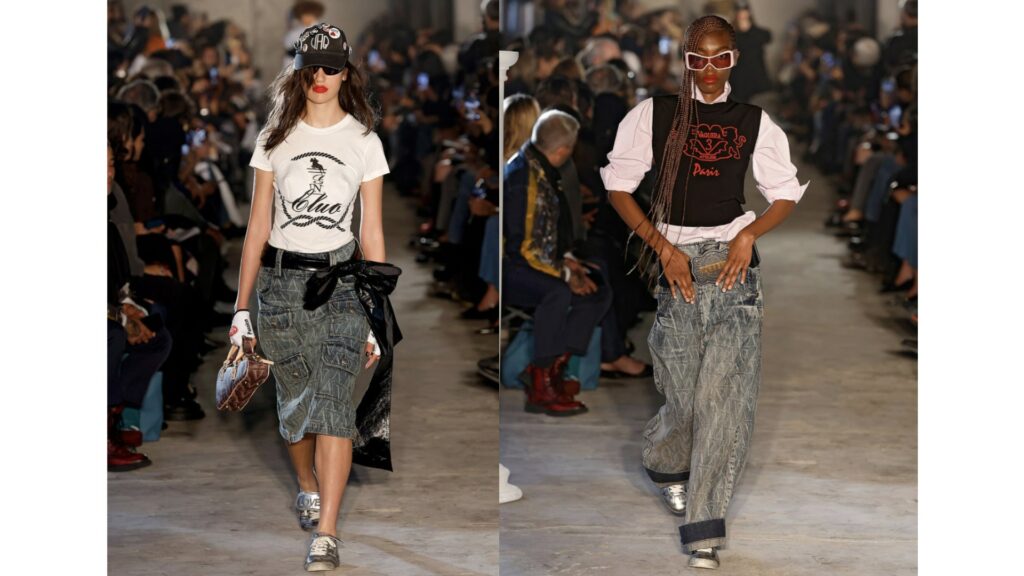
Coperni and Vaquera infused a fresh spin into Y2K nostalgia fashion by celebrating childhood favorites while incorporating playful modern elements. Their collections featured denim-on-denim ensembles, low-rise jeans, and vibrant graphic tees adorned with whimsical motifs that evoke the spirit of the early 2000s. With a nod to the late ’90s and early Y2k’s, they seamlessly blended elements , appealing to both Gen Z and millennials alike giving us true Kidcore.
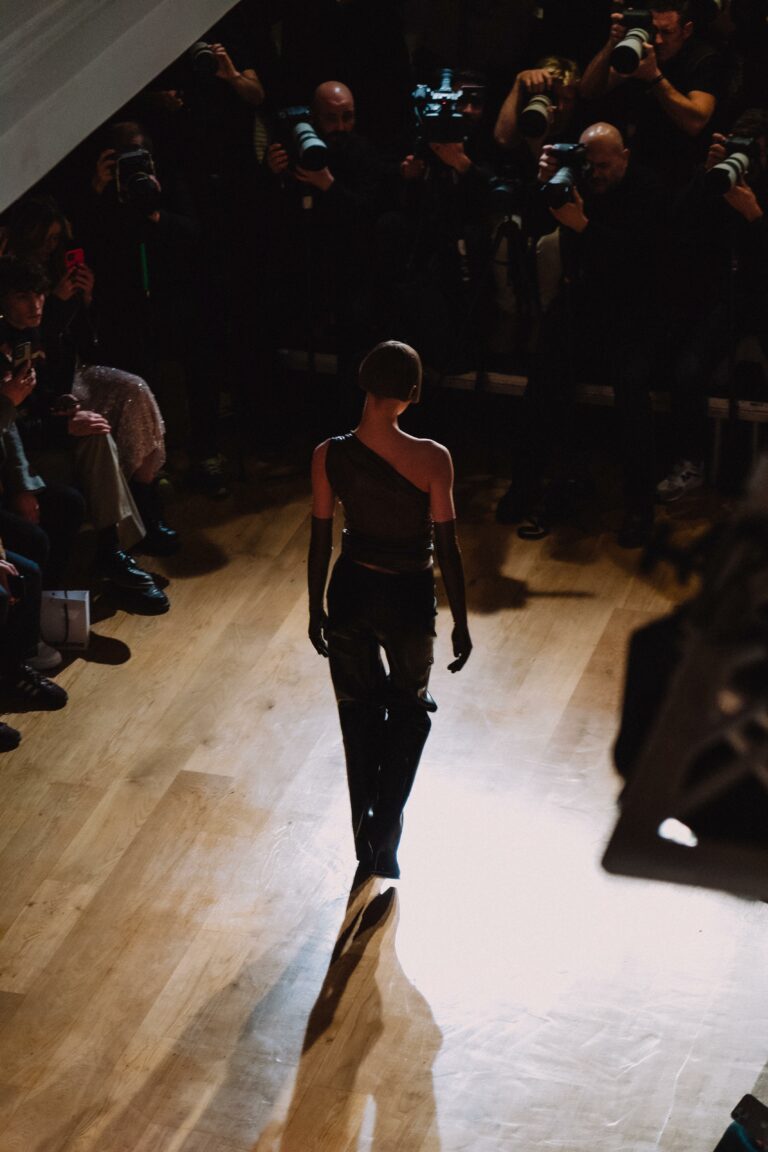
By borrowing from decades that shaped fashion’s evolution, designers demonstrated that nostalgia can be a powerful creative force. It allows them to tap into timeless styles while making room for innovation—whether through cutting-edge materials, eco-conscious designs, or futuristic silhouettes. This balance of old and new ensures that fashion remains dynamic and relevant, appealing to both a sense of heritage and progress.
The shows this season were a perfect example of how looking back is not just a way to honour fashion’s legacy but a vital tool for pushing it forward. The Paris runways reminded us that the future of fashion doesn’t lie in discarding the past but in reimagining it, making it endlessly exciting and full of possibility. And in a world where trends often come and go, this cycle of reinvention is what keeps fashion vibrant and continuously evolving.
Authors Niqhat Sidhu & Tanny Onsalo
Niqhat Sidhu is a passionate fashion enthusiast who recently graduated from Istituto Marangoni Paris. With a unique blend of creativity and business acumen, she also holds a double bachelor’s degree in Business Marketing and Law.
Tanny Onsalo is Creative director, fashion forecaster and style consultant of TROUVER agency, she has worked for the magazine Vogue as Global Editorial Expert and led multiple global tentpole editorials. She directed the fashion forecasting of trends for Vestiaire Collective, spearheading the Fashion Journal, Newsroom and annual fashion data reports.
